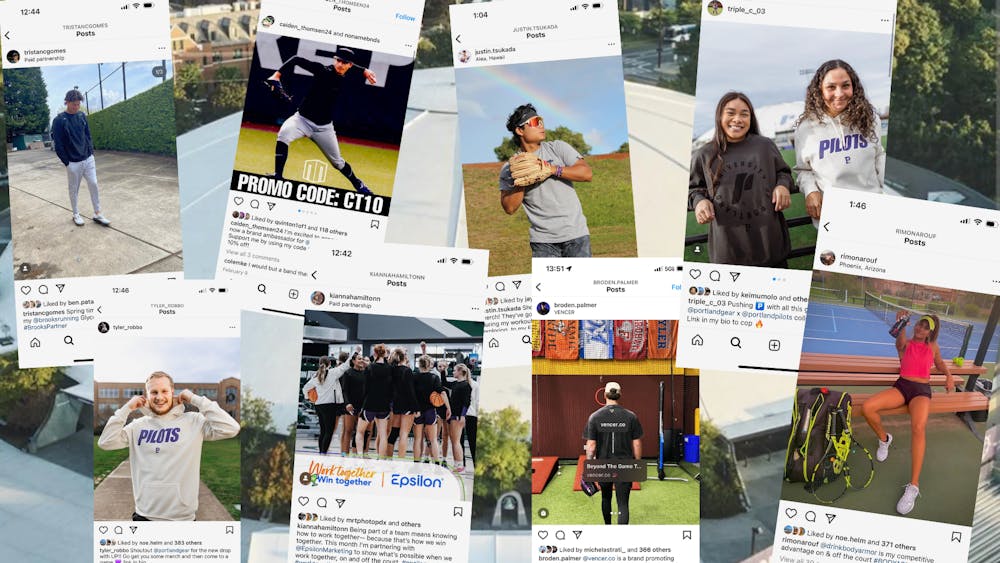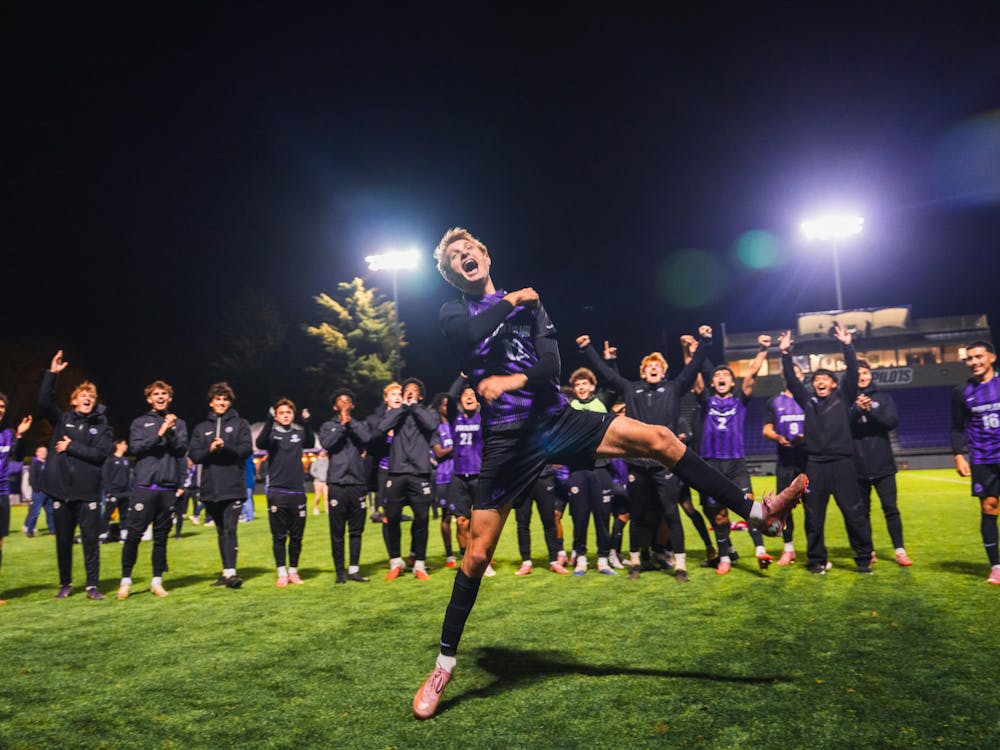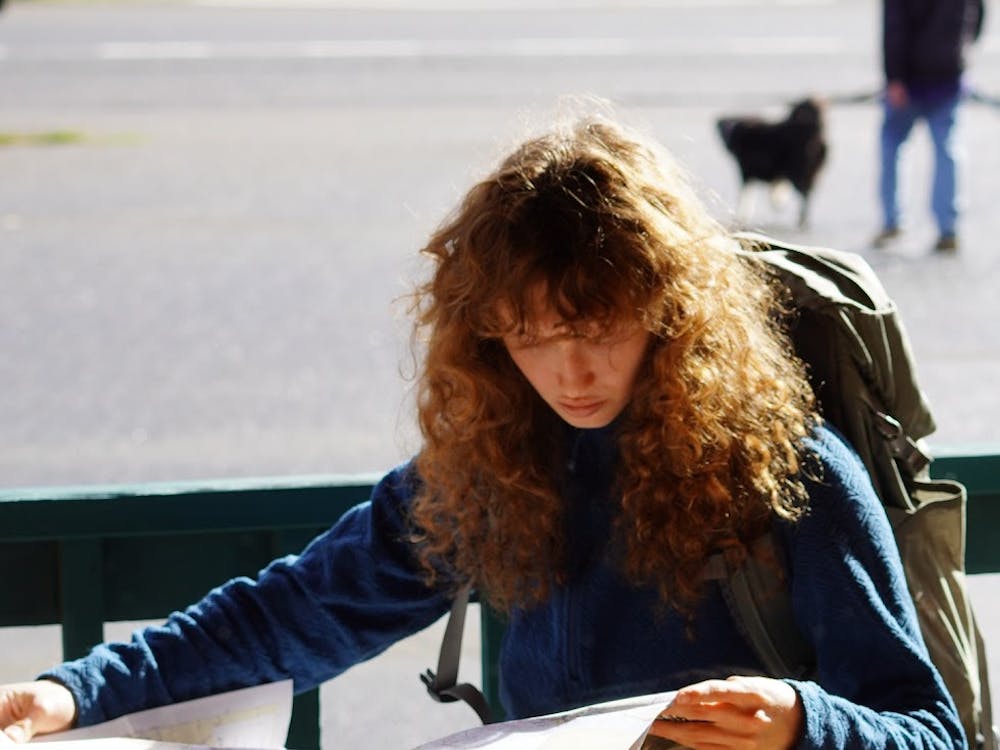Following the 2021 Supreme Court ruling in NCAA v. Alston, the National Collegiate Athletics Association (NCAA) was forced into making a significant change within their policies: College athletes would be allowed to profit from their name, image and likeness (NIL).
Since then, athletes across the country have seized this opportunity. From standout athletes like Livvy Dunne to Jared McCain, NIL deals have transformed the world of collegiate athletics as student athletes increasingly partner with companies and profit from the brands they've built.
And, in February 2024, through further changes in legislation, UP athletics was finally able to join the movement, entering into the world of NIL.
Jason Brough, senior associate athletic director, believes that the expansion of NIL is a necessary and positive change for student athletes.
“A student could create a YouTube channel and make money on it or go to a performing arts school and make money on it,” Brough said. “But a student athlete couldn’t do anything to use their name, image or likeness to make money.”
Student athletes, such as UP women’s basketball player Anna Eddy, also believe that the expansion of NIL has had a positive impact, namely allowing student athletes to profit from their work.
“The schools and athletic programs are making so much money off their players,” Eddy said. “And the players weren’t getting anything from it.”
However, navigating the national NIL landscape has become increasingly complex. What was once a strict set of regulations enforced by the NCAA has transformed into a system with little to no NCAA regulation.

According to Brough, athletes' ability to profit off their name, image and likeness has expanded tremendously over the past three years.
“Initially the NCAA was basically handcuffed into allowing name, image and likeness to happen where a student athlete can make money through endorsement deals, run camps, things like that,” Brough said. “Now, after a number of court cases, boosters can literally pay someone to go to their school.”
But, this is not how the NIL system operates for every NCAA student athlete. There is still a demographic facing certain restrictions: international student athletes.
All international student-athletes are granted legal residency in the U.S. through student visas. However, these visas limit international students from engaging in employment outside of their university campuses.
For Tyler Robertson, a senior on the men's basketball team, being from Australia has made navigating the murky waters of NIL a bit more complicated. Because Robertson is not able to partner with local businesses in the U.S., he has focused many of his NIL efforts on giving back to his hometown of Melbourne, Australia.
In the summer of 2023, Robertson hosted a basketball camp for 400 kids and was eligible to earn money from this event.
“Being able to find ways to give back to people and to get out in the community has always been important to me,” Robertson said. “As an international student it is definitely hard to do, but there are still ways for us internationals to take advantage of NIL opportunities
Additionally, navigating NIL at the state level is just as complex, and it is only just beginning to make its mark on Oregon.
While the NCAA announced updates to NIL restrictions in 2021, it wasn’t until 2024 that the state of Oregon was able to negotiate more freedom for its student athletes. The passing of House Bill 4119 in February provided student athletes and universities in Oregon with more authority in decision making regarding NIL.
“It’s a new reality and we have to keep up, whether you like it or not,” Shantay Legans, the coach of UP’s Men’s Basketball team, said in an interview with Portland Magazine. “You just don’t want to be left behind.”

The recent changes in Oregon’s legislation have given UP the opportunity to promote visibility for its student athletes in efforts to help garner NIL deals through two platforms.
The first platform, Opendorse, provides every student athlete at UP with the opportunity to market themselves. Opendorse allows student athletes to create their own profile and set prices for collaborations, while also creating a space for communication between student athletes and companies.
For student athletes like Robertson, where certain limitations exist in the NIL landscape, Opendorse also gives him the opportunity to disclose the parameters of his international status.
“Opendorse provides opportunities for us athletes to easily connect with businesses and like minded people in the goals we have for the NIL space,” Robertson said. “It makes it easy to find opportunities that align with our values as people.”
UP also has created its own third-party collective, Back the Bluff. Through the Back the Bluff website, donors have the autonomy to direct their contributions to a specific UP athletic team. Once the money is received, Back the Bluff ensures that it is distributed properly.
For walk-ons like Eddy, who has recently signed her first NIL deal with Epsilon Marketing, the loosening restrictions surrounding NIL are palpable.
“For me especially I’m not on scholarship,” Eddy said. “I’m still having to do the same work as the other girls and I can’t get a job because of the time commitment, so it’s been a cool way for me to make money.”
Despite the success UP has had in creating NIL opportunities for their student-athletes, the University also aims to keep its athletes grounded in an environment that is slowly becoming monopolized.
Through programs like the Student Athlete Advisory Committee (SAAC), student-athletes are encouraged to prioritize their academic responsibilities and remember the "student" in what it means to be a student-athlete.
SAAC President Will Bush strives to keep UP’s student-athletes engaged through various cross-campus initiatives.
“With NIL and the new conference realignment, the point of being a student-athlete is being ignored — you’re becoming an athlete, not a student-athlete,” Bush said. “That’s the thing with SAAC, it helps keep the values of things like education and community.”
So what does the future of NIL hold in the ever-changing climate of college athletics? Alongside conference realignments and transfer portal chaos, it’s hard to say. But, implications will continue to be widespread as NIL continues to make its mark at UP.
Emma Swett is a sports reporter for The Beacon and can be reached at swett25@up.edu.








